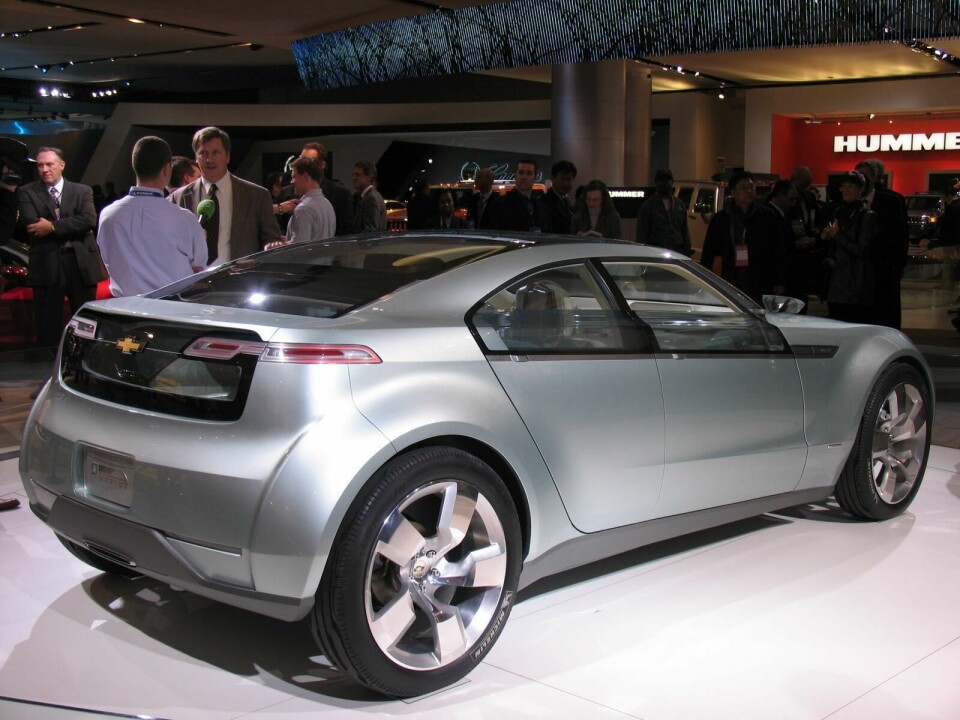
Interview: Bob Boniface, Director of Design, GM E-Flex vehicles
Bob Boniface, GM’s Director of Design for its E‑Flex architecture, discusses how his team is shaping a new generation of eco‑conscious, plug‑in vehicles through innovative studio-led styling and sustainable engineering




CDN: So are you going to be creating other vehicles using this architecture across other brands? Might we see a Cadillac E-Flex vehicle for example?
“I won’t comment on that, but I’ll just say that we consider this architecture to be flexible enough to be used by any of our brands. And the market will help dictate that. This car needs to get on the road quickly and I hope that’s why I was tapped to do the job. We’re making decisions fast, at breakneck pace, and it’s been a wild ride so far.”

CDN: What were some of your influences over your career and what vehicles are you most proud of?
“I’m very proud of what the Volt has done. If you want to get people to be part of the solution of sustainability you have to make them want to be seen with the product. When someone tells you ‘design an electric car’ you really don’t get all that excited. But the way people responded to that car, because of the way it looked, I’m proud of that. It says: ‘I can drive a car that is good for the environment and be fashionable at the same time’. The other thing that I was really proud of was the work we did on the Camaro - we did all the architecture work on that. To help bring that car back - it was important to General Motors and important to me as an enthusiast. Those two cars are two of my proudest moments.
CDN: During your five years at GM, what would you say is their unique approach to design when compared to your experience at Chrysler?
“Everyone has seen the change at GM in aesthetics in interior and exterior in the last four or five years. Bob Lutz is a big part of that. He lets the designers do what they do best. We’re not nickel and diming the cars simply for the sake of the bottom line. We’re not compromising the design just so we can get that last inch of headroom or trunk volume. It’s more about the car conveying the appropriate message for the brand. Ed Welburn is a big part of that too. Ed’s a car guy - he loves cars. He comes in and he gets excited, he’s got a big smile on his face, and that’s contagious. The enthusiasm at GM is contagious right now.”
CDN: What is the biggest challenge you face in your current position?
“The biggest challenge is getting a car to market and have it meet the aero requirements and the cost targets. The car is a Chevrolet: it’s not a Bentley and it’s not a Rolls-Royce, the cost is an issue. You’ve got to make the car look good, function well and be accessible to the biggest chunk of the population - you’ve got to keep costs down. So making it look good and meeting cost targets and aero targets is a challenge, but we haven’t made any mistakes.”
CDN: How do you feel you’ve changed over time as a designer?
“I think I’ve matured. When you start off as a designer you’re kind of selfish, you think: ‘you do it my way or it’s a failure’. Being able to have creative compromise and still get the product to look good and have value to the consumer, that’s something that I’ve learned in the last decade and a half. The idea is to get something good for the customer. It’s not for you, the designer. You’re designing for someone else. Make sure it’s good in their eyes, not just your eyes.”
CDN: What are the elements that comprise good car design?
“Good car design should be thought of as fashion design. People have to want to buy the car, they have to want to be seen in the car, and they have to have an emotional connection with the car. That’s when design becomes contagious.”







